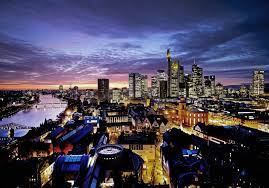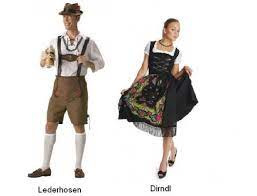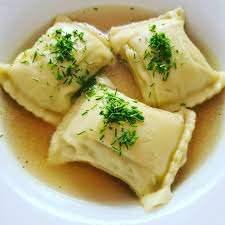Text
Germany Culture
Germany's central and southern regions have forested hills and mountains cut through by the Danube, Main, and Rhine river valleys. In the north, the landscape flattens out to a wide plain that stretches to the North Sea. Between these extremes, Germany is a country of incredible variety.
Germany's location at the heart of Europe has shaped its history both for good and bad. It borders nine neighbors,Denmark, Poland, Czech Republic,Austria,Switzerland,France, Luxembourg,Belgium and the Netherlands,more than any other European country.
Germany's largest wooded area, and its most famous, is in the southwest near the Swiss border. This is the Black Forest, a mountainous region full of pines and fir trees. This forest contains the source of the Danube, one of Europe's longest rivers.

As many countries, Germany have a traditional clothing. The female outfit is the dirndl, it consists of a bodice combined with an apron in a different color, such as green, red, etc. Sometimes it is sleeveless and is worn with a cotton and lace blouse and other times it has sleeves and a high neck. The hats are usually quite elaborate. Traditional men's clothing is made of leather, linen, and wool. It's called 'Lederhosen', it goes with knee-length pants or shorts made of leather are worn, they wear it with rustic shoes and woolen socks. Jackets and hats vary by region and occasion.

Their traditional food:
1.-Maultaschen:
Maultaschen from Swabia are a lot like ravioli but bigger. They are typically palm-sized, square pockets of dough with fillings that run the gamut from savory to sweet and meaty to vegetarian.
A traditional combination is minced meat, bread crumbs, onions and spinach -- all seasoned with salt, pepper and parsley. They're often simmered and served with broth instead of sauce for a tender, creamier treat, but are sometimes pan-fried and buttered for extra richness.
Today you can find maultaschen all over Germany (even frozen in supermarkets) but they're most common in the south.
Here the delicious dumplings have become so important that in 2009, the European Union recognized Maultaschen as a regional specialty and marked the dish as significant to the cultural heritage of the state of Baden-Württemberg.

2.- Labskaus
Labskaus is not the most visually appealing dish, but a delectable mess that represents the seafaring traditions of northern Germany like no other. In the 18th and 19th centuries, ship provisions were mostly preserved fare, and the pink slip of labskaus was a delicious way of preparing them.
Salted beef, onions, potatoes and pickled beetroot are all mashed up like porridge and served with pickled gherkins and rollmops (see below). It has long been a favorite of Baltic and North Sea sailors.
Today the dish is served all over northern Germany, but especially in Bremen, Kiel and Hamburg. And while on modern ships fridges have been installed, it remains popular as a hangover cure.

3.- Sausages:
There is no Germany without sausages.
There are countless cured, smoked and other varieties available across wurst-loving Germany, so, for this list we will focus on some of the best German street food: bratwurst, or fried sausages.
There are more than 40 varieties of German bratwurst. Fried on a barbecue or in the pan, and then served in a white bread roll with mustard on the go, or with potato salad or sauerkraut as the perfect accompaniment for German beer.

Working Culture:
The workers have the right to work 35 hours per week. For them, work is work. The time is taken very seriously, and employees make an effort to avoid wasting it. Punctuality is a virtue in German culture. For example, if a business meeting is scheduled at 10:00, everyone should arrive at 9:55 at least. Germans really enjoy their reputation as ‘morning people’. Teamwork is an important thing inside the office. Germans do like to collaborate when given the opportunity. When it's the time for making a decision, they talk it out and come to a collective idea.

Holidays:
Carnival | February, 16: is a period of Carnival celebrations that go on until Ash Wednesday. Notable Carnival parades in Germany take place in Cologne, Dusseldorf and Aachen.
Labor Day | May 1st: is marked with a blend of pagan rituals and also the celebrations of worker's rights. There are lots of celebrations and parties on the night of the 30th April into the 1st of May.
Oktoberfest: Even though it starts in September, the most German of holidays is called Oktoberfest. This holiday started in 1810 with the wedding of Crown Prince Ludwig and Princess Therese von Sachsen-Hildburghausen. They held a big party near Munich, and it was so popular that it became an annual event, with beer, food, and entertainment.
Martinmas | November, 11: The Feast of Saint Martin, the Germanic Martinstag celebration, is sort of like a combination of Halloween and Thanksgiving. The legend of Saint Martin tells the story of the dividing of the cloak, when Martin, then a soldier in the Roman army, tore his cloak in two to share it with a freezing beggar at Amiens.
In the past, Martinstag was celebrated as the end of the harvest season, and in modern times has become the unofficial start of the Christmas shopping season in German-speaking countries in Europe.
3 notes
·
View notes